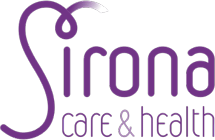Opioid agonist treatment could substantially reduce drug related deaths if used more widely
- 2nd March 2021
Opioid agonist treatment could substantially reduce drug related deaths if used more widely
New evidence that opioid agonists such as methadone and buprenorphine could substantially reduce drug related deaths if more widely used in the community and prison, and for longer, has been published in Lancet Psychiatry today [25 February].
Treatment of people addicted to opioids with methadone or buprenorphine also known as ‘opioid agonist treatment’ (OAT) reduces many of the harms associated with injecting drug use including death by overdose, suicide, injury, or other causes. OAT also reduces the risk of HIV or hepatitis C virus transmission and increases engagement to HIV treatment and improves its outcomes, which could reduce deaths from these diseases.
Globally, mortality remains high among people who inject drugs (primarily opioid drugs), with OAT access being poor and its impact potentially limited by short durations of treatment.
An international team led by the NIHR Health Protection Research Unit in Behavioural Science and Evaluation at University of Bristol modelled different scenarios to predict how many drug related deaths could be prevented over a 20-year period by scaling up OAT among people who inject drugs.
They modelled three global settings – Kyiv (Ukraine), Tehran (Iran) and Perry County in Kentucky (USA) – chosen because of their differences across a number of important factors: mortality risk in the community, HIV prevalence, HIV treatment and proportions of people who inject drugs using OAT in the community and prison.
The scenarios considered how many drug related deaths would be prevented if:
- there was no increase in the use of OAT
- OAT was scaled up to being used by 40 per cent of people who inject drugs in the community
- OAT was scaled up to being used by 40 per cent of people who inject drugs in the community plus increasing the average length of time on OAT from 4-14 months to two years, and
- OAT scaled up in community (as 3 above) and for prison populations.
For each scenario they predicted how many deaths from overdose, suicide, injury, and HIV and hepatitis C related disease could be prevented.
The researchers found that scaling up use of OAT to 40 per cent could avert between 12 per cent and 24 per cent of all drug related deaths, including 13-19 per cent of overdose deaths, with greater impact in settings with significant HIV mortality (Tehran and Kyiv).
Improving the length of time people were on OAT and providing-prison based OAT were predicted to have significant additional impact, averting between 27 per cent and 48 per cent of drug related deaths.
The various effects of OAT contributed differently to its overall impact in scenario 4 because of variations in the incidence of different health harms; the effect of OAT on reducing HIV transmission was the most important in Kyiv and Tehran accounting for 43-68 per cent of deaths averted, whereas the effect of OAT on reducing overdose mortality was most important in Perry County, accounting for 63 per cent of deaths averted.
Dr Jack Stone from the NIHR Health Protection Research Unit in Behavioural Science and Evaluation at University of Bristol and lead author of the study, said: “OAT is a critical intervention which has been shown to be highly cost-effective through substantially reducing the health and social harms associated with opioid dependence and injecting drug use. Our analysis has shown that the substantial public health burden caused by injecting drug use can be markedly reduced through scaling up of OAT.
“The impact may be greatest in settings with significant HIV mortality and can be maximized by improving retention in OAT and providing prison-based OAT. Previous studies have likely underestimated the impact and cost-effectiveness of OAT on reducing mortality due to only considering a limited range of benefits of OAT.”
Professor Peter Vickerman, joint senior author from the NIHR Health Protection Research Unit in Behavioural Science and Evaluation at University of Bristol, said: “This is the most comprehensive modelling analysis yet of the potential impact of OAT on reducing mortality among people who inject drugs and provides strong evidence that scaling up OAT is a priority for improving the health of people who inject drugs and their considerable mortality.”
Professor Matt Hickman, joint senior author from the NIHR Health Protection Research Unit in Behavioural Science and Evaluation at University of Bristol, said “Recent global reviews have shown that OAT coverage is low in many countries. OAT is a life-saving intervention – scaling up and retaining people who inject drugs on OAT is essential to address the public health crisis of opioid related deaths.”
Peter and Matt are members of the Drug and Alcohol Health Integration Team.
Professor Louisa Degenhardt, co-author from the National Drug and Alcohol Research Centre, UNSW Sydney, Australia, said “This study provides more evidence of the importance, at the population level, of OAT provided at scale, not only for people who are opioid dependent living in the community, but very importantly, for people who are in prison. We hope that this evidence can assist with increasing provision of OAT in all settings.”
Paper:
‘Modelling the intervention effect of opioid agonist treatment in multiple mortality outcomes in people who inject drugs: a three-setting analysis’ by Jack Stone et al. in Lancet Psychiatry






